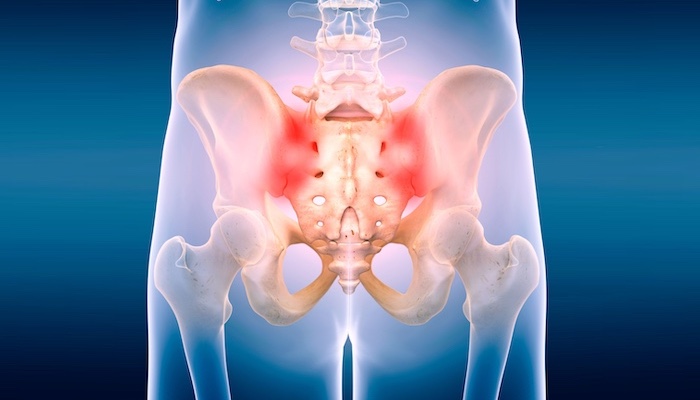
The sacroiliac (SI) joint, located in the lower back where the spine meets the pelvis, plays a critical role in providing stability and absorbing shock during movement. However, when this joint becomes irritated or inflamed, it can lead to a condition known as sacroiliac joint dysfunction (SIJD), causing significant discomfort and impacting one's quality of life. At Precision Pain Care and Rehabilitation, our goal is to help patients find effective relief through personalized, minimally invasive treatments, including interventional pain management.
What is Sacroiliac Joint Dysfunction?
Sacroiliac joint dysfunction occurs when there is improper movement in the SI joint, leading to pain in the lower back, buttocks, or even radiating to the legs. This pain may be sharp or aching and can often mimic other conditions like sciatica or herniated discs. SIJD can be caused by several factors, including:
- Trauma or Injury: Accidents, falls, or direct impact can cause damage or misalignment in the SI joint.
- Arthritis: Degenerative arthritis, also known as osteoarthritis, can lead to inflammation and damage of the SI joint.
- Pregnancy: During pregnancy, hormonal changes cause the ligaments around the SI joint to relax, increasing the risk of dysfunction.
- Repetitive Stress: Activities that place repeated stress on the SI joint, such as heavy lifting or prolonged standing, may contribute to the development of SIJD.
Symptoms of Sacroiliac Joint Dysfunction
SIJD symptoms can vary, but commonly include:
- Pain in the lower back, buttocks, or hips.
- Pain that radiates down one or both legs, similar to sciatica.
- Increased pain when standing, walking, or climbing stairs.
- Stiffness or a feeling of instability in the lower back or pelvis.
The Role of Interventional Pain Management in Treating SIJD
At Precision Pain Care and Rehabilitation, we take an interventional approach to treating sacroiliac joint dysfunction, focusing on minimally invasive techniques that provide lasting pain relief. Interventional pain management offers a wide range of procedures to target the source of the pain directly, rather than relying solely on medications or surgery. Below are some of the key interventional pain management treatments we use for SIJD:
1. Sacroiliac Joint Injections
SI joint injections involve administering a combination of local anesthetic and anti-inflammatory medication directly into the joint. This can provide significant pain relief and reduce inflammation, helping patients regain mobility. These injections can also be used diagnostically to confirm that the SI joint is the source of the pain.
2. Radiofrequency Ablation (RFA)
For patients who experience temporary relief from SI joint injections but require longer-lasting results, radiofrequency ablation may be recommended. RFA involves using heat to disrupt the nerve signals transmitting pain from the SI joint. This procedure can provide extended pain relief for several months to a year, allowing patients to engage in physical therapy and other rehabilitative exercises.
3. Physical Therapy and Rehabilitation
Interventional pain management is often combined with physical therapy to improve overall function and strength. Physical therapists can guide patients in exercises to improve stability and flexibility around the SI joint, helping to prevent future flare-ups. Rehabilitation plays a crucial role in restoring movement patterns and reducing the chances of recurrent pain.
4. Platelet-Rich Plasma (PRP) Therapy
Regenerative medicine techniques like platelet-rich plasma (PRP) therapy may also be used to promote healing in the SI joint. PRP involves drawing a small sample of the patient’s blood, concentrating the platelets, and injecting them into the affected area. These platelets release growth factors that promote tissue healing and reduce inflammation, providing a natural alternative to more conventional treatments.
Personalized Care at Precision Pain Care and Rehabilitation
At Precision Pain Care and Rehabilitation, we recognize that each patient's experience with SIJD is unique. Therefore, our approach begins with a comprehensive evaluation, including a detailed medical history, physical examination, and diagnostic imaging if needed. Once we understand the underlying cause of the pain, we work with the patient to create a tailored treatment plan that may include one or a combination of the interventional procedures mentioned above.
Benefits of Interventional Pain Management
- Minimally Invasive: Treatments like SI joint injections and RFA are performed on an outpatient basis, requiring minimal recovery time.
- Targeted Pain Relief: These techniques directly address the source of pain, leading to more effective results compared to oral medications.
- Reduced Dependence on Medications: By treating the pain at its source, patients often need fewer pain medications, reducing the risk of side effects and dependency.
- Improved Quality of Life: With reduced pain and increased mobility, patients can return to their daily activities and enjoy a better quality of life.
When to Seek Treatment for SIJD
If you are experiencing persistent lower back or buttock pain that interferes with your ability to work, exercise, or enjoy everyday activities, it's essential to seek medical attention. Early diagnosis and treatment can prevent the condition from worsening and improve the chances of successful pain management.
At Precision Pain Care and Rehabilitation, we are dedicated to providing our patients with compassionate, state-of-the-art care. Our interventional pain management techniques are designed to help you regain control of your life, free from the limitations of sacroiliac joint dysfunction.
Conclusion
Sacroiliac joint dysfunction can be a challenging condition to manage, but with the right combination of interventional pain management and rehabilitation, significant relief is possible. At Precision Pain Care and Rehabilitation, our commitment is to help each patient find a personalized path to pain relief, restore mobility, and enhance their quality of life. If you or a loved one is struggling with SIJD, we invite you to contact our office and schedule a consultation. Together, we can take the first step towards a pain-free future.
Precision Pain Care and Rehabilitation has two convenient locations in Richmond Hill – Queens, and New Hyde Park – Long Island. Call the Queens office at (718) 215-1888 or (516) 419-4480 for the Long Island office to arrange an appointment with our Interventional Pain Management Specialists, Dr. Jeffrey Chacko or Dr. Sonny Ahluwalia.















